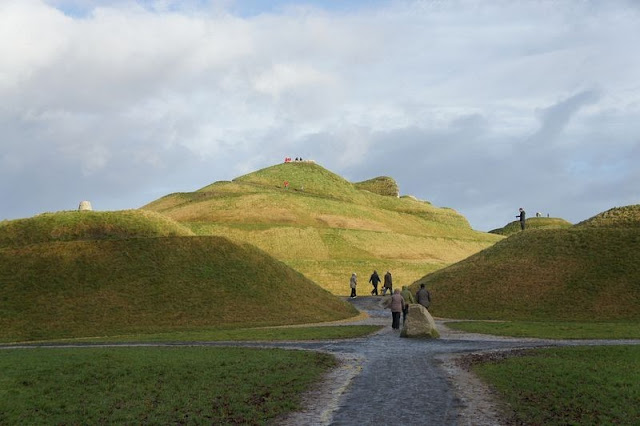A Clochán is a dry-stone hut with
a corbelled roof, usually associated with the south-western Irish seaboard. In
Irish the name clochán, is given to these structures, derived from the word “cloch”,
a stone, it reflects the fact that they’re constructed wholly from stone
without the use of mortar. Clochans are mainly found in the Southwest of
Ireland, in the Dingle Peninsula of County Kerry. Several occur in religious
contexts such as used by the monks successors carried on the architectural
tradition in the Scottish Isle of Iona.
These are amazing huts built each
layer of stone inward just enough to close the top with a single stone to see
how the natives of Ireland lived merely a few hundred years ago. These were
some hearty folk who lived in these stone enclosures tending to their sheep and
potatoes. This will completely understand why so many emigrated given the
chance in the 19th Century. According to archeologist the exact construction
date of these structures is unidentified with any degree of conviction. No
direct evidence to date any of these buildings before the 8th century. Whereas
some connected with religious sites may be pre-Romanesque, considers most to
date after the 12th century, including up to the 19th century.
These are usually round beehive huts
and rectangular footprints date to a later era, which are not completely built
of stone, and may have possessed a thatched roof. The Clochan walls are very
thick, up to 1.5 meters and some times more than a few are joined together by
their walls. The building technique behind the clochán is an ancient one, which
employs the principle of corbelling. Therefore it is a
simple but effective method of construction and has been used for many centuries,
not only in Ireland but in other European countries too. In many countries
such huts were built as temporary shelter for nomadic shepherds as they moved
around with their flocks.Source: Charismatic Planet























































